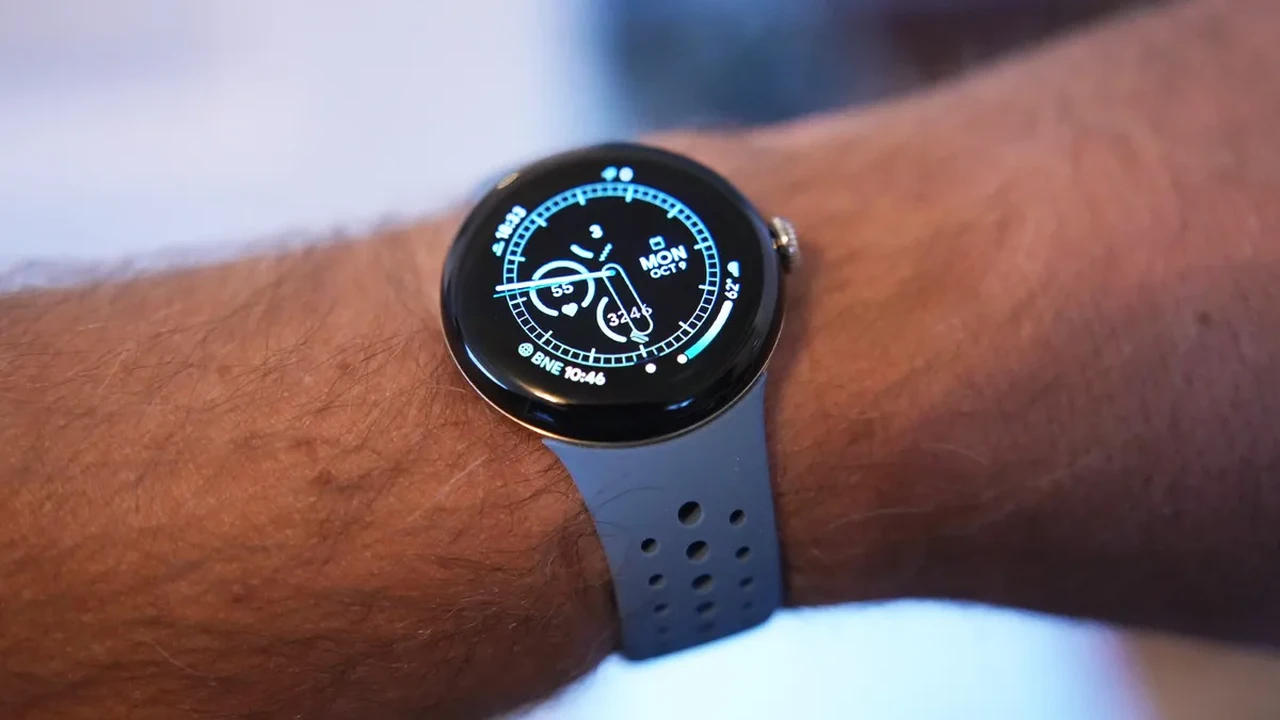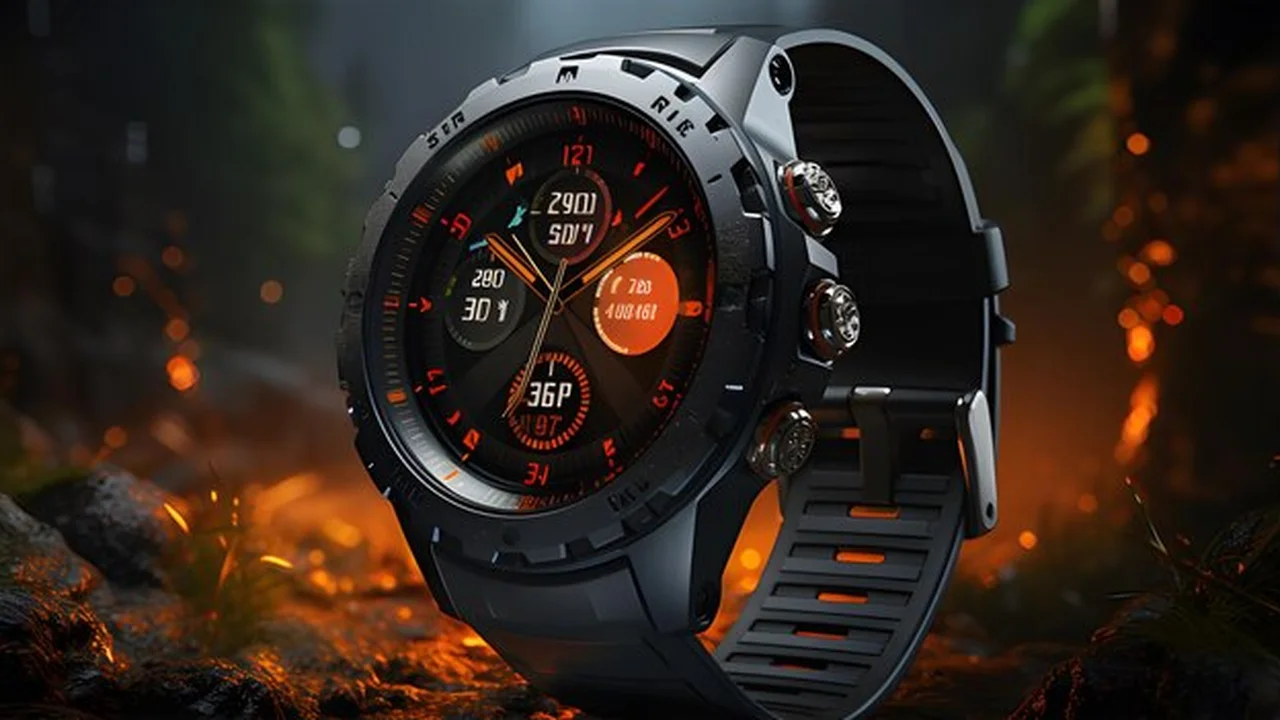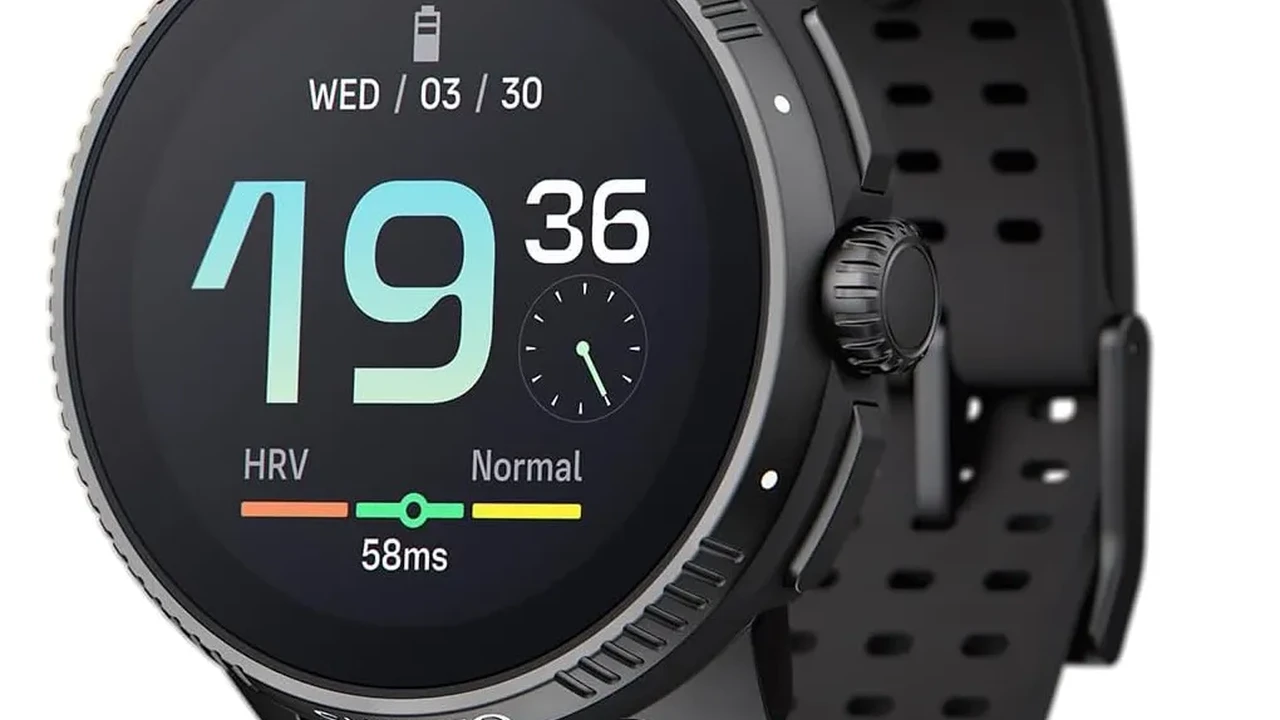Best Smartwatches for Android Users in 2024
Compare the leading smartwatches designed for Android phones. Find the best Wear OS and other compatible smartwatches for your device.

Compare the leading smartwatches designed for Android phones. Find the best Wear OS and other compatible smartwatches for your device.
Best Smartwatches for Android Users in 2024
Alright, Android users, listen up! If you're rocking an Android phone, you know the world of smartwatches can feel a bit overwhelming. Unlike our iPhone-toting friends who pretty much have one main choice, we've got a whole universe of options. From Google's own Wear OS to proprietary systems, the choices are vast. But don't sweat it, because we're here to break down the best smartwatches for Android users in 2024, helping you find the perfect wrist companion that seamlessly integrates with your digital life.
We're not just talking about telling time here. Modern smartwatches are miniature computers on your wrist, capable of tracking your fitness, monitoring your health, handling notifications, making payments, and even taking calls. The key is finding one that plays nice with your Android device, offers the features you actually need, and looks good doing it. Let's dive in!
Understanding Android Smartwatch Ecosystems Wear OS vs Others
Before we jump into specific models, it's crucial to understand the landscape. The dominant player in the Android smartwatch world is Google's Wear OS. This operating system is designed specifically for smartwatches and offers deep integration with Android phones, access to the Google Play Store for apps, Google Assistant, Google Maps, and Google Pay. Many manufacturers, like Samsung, Mobvoi, and Fossil, use Wear OS.
However, some brands, like Huawei and Amazfit, use their own proprietary operating systems. These can offer excellent battery life and specific features, but they might not have the same app ecosystem or deep Google service integration as Wear OS. We'll highlight the pros and cons of each as we go.
Top Picks for Android Smartwatches in 2024 Android Wearables
Here are our top recommendations, broken down by what they excel at, along with their typical use cases and pricing.
Samsung Galaxy Watch 6 Classic The Premium Android Smartwatch Experience
Use Case: For Android users who want the absolute best, a premium design, comprehensive health tracking, and a smooth, feature-rich experience. Ideal for those who appreciate a physical rotating bezel.
Features: The Galaxy Watch 6 Classic runs on Wear OS powered by Samsung, which means you get the best of both worlds: Google's services combined with Samsung's excellent health tracking suite (Samsung Health). It boasts a beautiful AMOLED display, a beloved physical rotating bezel for navigation, advanced sleep tracking, ECG, blood pressure monitoring (in select regions), body composition analysis (BIA), and robust fitness tracking. It's also highly customizable with a vast array of watch faces and straps.
Comparison: Compared to other Wear OS watches, the Galaxy Watch 6 Classic stands out with its premium build quality, the tactile satisfaction of the rotating bezel, and Samsung's refined software experience. It often offers better integration with Samsung phones, but works seamlessly with all Android devices.
Price: Starts around $399 (Bluetooth) / $449 (LTE).
Google Pixel Watch 2 The Pure Wear OS Experience and Google Integration
Use Case: For Android users who prioritize a pure Google experience, seamless integration with Google services, and Fitbit's excellent health and fitness tracking. Perfect for Pixel phone owners.
Features: The Pixel Watch 2 is Google's second attempt at a smartwatch, and it's a significant improvement. It runs the latest Wear OS, offering deep integration with Google Assistant, Google Maps, Google Wallet, and the full suite of Google apps. It also comes with Fitbit's comprehensive health and fitness tracking built-in, including continuous heart rate monitoring, stress management, skin temperature sensing, and advanced sleep tracking. The design is sleek and minimalist, with a vibrant AMOLED display.
Comparison: The Pixel Watch 2 offers a more 'stock Android' feel on your wrist compared to Samsung's customized Wear OS. Its strength lies in its deep Google and Fitbit integration. While it lacks a physical bezel, its haptic crown provides satisfying feedback. Battery life is improved over the first generation but still not multi-day.
Price: Starts around $349 (Bluetooth) / $399 (LTE).
Mobvoi TicWatch Pro 5 Long Battery Life Android Smartwatch
Use Case: For Android users who demand exceptional battery life without sacrificing Wear OS functionality. Ideal for outdoor enthusiasts or those who hate daily charging.
Features: The TicWatch Pro 5 is a beast when it comes to battery life, thanks to its unique dual-layer display technology. It combines a low-power FSTN LCD screen for always-on time and basic info with a vibrant AMOLED display for full Wear OS functionality. This allows it to achieve up to 80 hours of battery life in Smart Mode. It runs on the latest Snapdragon W5+ Gen 1 platform, ensuring smooth performance. It offers comprehensive health and fitness tracking, including heart rate, SpO2, sleep, and stress monitoring.
Comparison: The TicWatch Pro 5's main selling point is its unparalleled battery life among full-featured Wear OS watches. While its design is more rugged than elegant, its performance and endurance make it a strong contender for power users. It might not have the same level of health certifications as Samsung or Google, but it covers all the basics very well.
Price: Starts around $349.
Garmin Venu 3 The Fitness Focused Android Smartwatch
Use Case: For Android users who are serious about fitness and health tracking, want multi-day battery life, and don't necessarily need the full app ecosystem of Wear OS. Excellent for athletes and health-conscious individuals.
Features: While not running Wear OS, Garmin's Venu 3 offers fantastic compatibility with Android phones and an incredibly robust suite of fitness and health tracking features. It boasts a stunning AMOLED display, up to 14 days of battery life (in smartwatch mode), advanced sleep coaching, nap detection, body battery energy monitoring, wheelchair mode, and a new 'meditation' activity. Garmin's GPS tracking is top-notch, and its Connect app provides incredibly detailed insights into your workouts and overall health.
Comparison: The Venu 3 sacrifices some smartwatch 'smartness' (like Google Assistant or Google Maps on the watch) for superior battery life and unparalleled fitness tracking accuracy. If your primary reason for a smartwatch is health and exercise, Garmin is often the gold standard. It handles notifications and calls well, but its app store is more limited than Wear OS.
Price: Starts around $449.
Amazfit GTR 4 The Budget Friendly Android Smartwatch with Great Battery
Use Case: For Android users looking for a feature-packed smartwatch with excellent battery life at a more affordable price point. Great for casual fitness tracking and smart notifications.
Features: The Amazfit GTR 4 runs on Amazfit's proprietary Zepp OS, which is lightweight and efficient, contributing to its impressive 14-day battery life. It features a large, vibrant AMOLED display, accurate GPS tracking, comprehensive health monitoring (heart rate, SpO2, stress, sleep), and over 150 sports modes. It also supports Bluetooth calling and has a built-in speaker and microphone. While it doesn't have a vast app store like Wear OS, it covers all the essential smartwatch functions.
Comparison: The GTR 4 offers incredible value for its price. It provides many features found in more expensive smartwatches, especially in terms of health and fitness tracking and battery life. The trade-off is the more limited app ecosystem and less deep integration with Google services compared to Wear OS devices. However, for many users, its core functionality is more than enough.
Price: Starts around $199.
Key Considerations When Choosing Your Android Smartwatch Smartwatch Buying Guide
With so many great options, how do you pick the right one? Here are some factors to consider:
Battery Life Smartwatch Endurance
Do you want to charge your watch every night, every few days, or once a week? Wear OS watches typically last 1-2 days, while proprietary OS watches can go for a week or more. Consider your charging habits and needs.
Health and Fitness Tracking Smartwatch Sensors
What kind of data do you want to track? Basic steps and heart rate? Or advanced metrics like ECG, SpO2, body composition, and detailed sleep analysis? Brands like Garmin and Fitbit (integrated into Pixel Watch) are known for their robust health platforms.
Design and Comfort Smartwatch Aesthetics
Do you prefer a sporty look, a classic watch aesthetic, or something sleek and modern? Consider the size, weight, materials (aluminum, stainless steel), and strap options. Comfort is key since you'll be wearing it all day.
App Ecosystem and Smart Features Smartwatch Apps
Do you need access to a wide range of third-party apps directly on your watch? Do you rely heavily on Google Assistant, Google Maps, or Google Pay? Wear OS watches excel here. If you just need notifications and basic controls, a proprietary OS might suffice.
Price Smartwatch Budget
Smartwatches range from under $100 to over $500. Determine your budget and prioritize the features that are most important to you within that price range.
Compatibility Android Phone Integration
While all these watches work with Android, some might offer enhanced features or a smoother experience with specific phone brands (e.g., Samsung watches with Samsung phones, Pixel Watch with Pixel phones). Always double-check compatibility.
Setting Up Your New Android Smartwatch Smartwatch Setup Guide
Once you've picked your perfect Android smartwatch, setting it up is usually a breeze. Here's a general overview:
- Charge It Up: First things first, give your new watch a full charge.
- Download the App: Most smartwatches require a companion app on your Android phone (e.g., Wear OS by Google, Samsung Wearable, Zepp App, Garmin Connect). Download it from the Google Play Store.
- Pairing: Open the app and follow the on-screen instructions to pair your watch via Bluetooth. This usually involves confirming a code on both devices.
- Login/Sync Accounts: You'll likely need to log in with your Google account (for Wear OS) or create an account with the watch manufacturer. This syncs your data and allows access to app stores.
- Customize Settings: Dive into the watch and phone app settings to customize watch faces, notification preferences, health tracking goals, and app permissions.
- Explore Apps: If your watch has an app store, start exploring and downloading useful apps for your daily routine.
Maintaining Your Android Smartwatch Smartwatch Care Tips
To ensure your Android smartwatch lasts and performs well, a little maintenance goes a long way:
- Keep it Clean: Regularly wipe down your watch and strap with a soft, damp cloth to remove sweat, dirt, and oils. For silicone straps, soap and water work well.
- Protect the Screen: Consider a screen protector, especially if you're active or prone to bumps.
- Charge Smart: Avoid letting the battery completely drain too often. Charge it when it gets low, and try not to leave it on the charger for extended periods after it's full.
- Software Updates: Always install software updates when prompted. These bring new features, bug fixes, and security improvements.
- Water Resistance: Understand your watch's water resistance rating (ATM or IP rating). Don't push it beyond its limits. Rinse it with fresh water after swimming in salt water or chlorinated pools.
- Strap Care: If you have multiple straps, rotate them to extend their life. Clean them according to their material.
The Future of Android Smartwatches Wearable Technology Trends
The Android smartwatch market is constantly evolving. We're seeing trends towards:
- Improved Battery Life: Manufacturers are pushing for longer battery life, even on full-featured Wear OS devices.
- Advanced Health Sensors: Expect more sophisticated health monitoring, potentially including continuous glucose monitoring (non-invasive), advanced blood pressure, and even more precise body composition analysis.
- Enhanced Performance: Newer processors are making smartwatches faster and more responsive.
- Better Integration: Deeper integration with smart home devices and other IoT gadgets.
- Standalone Capabilities: More smartwatches will offer full functionality without needing a phone nearby, thanks to improved LTE and Wi-Fi capabilities.
Choosing the best smartwatch for your Android phone in 2024 means balancing features, design, battery life, and budget. Whether you're a fitness fanatic, a tech enthusiast, or just looking for convenient notifications on your wrist, there's an Android-compatible smartwatch out there for you. Happy hunting!
:max_bytes(150000):strip_icc()/277019-baked-pork-chops-with-cream-of-mushroom-soup-DDMFS-beauty-4x3-BG-7505-5762b731cf30447d9cbbbbbf387beafa.jpg)





